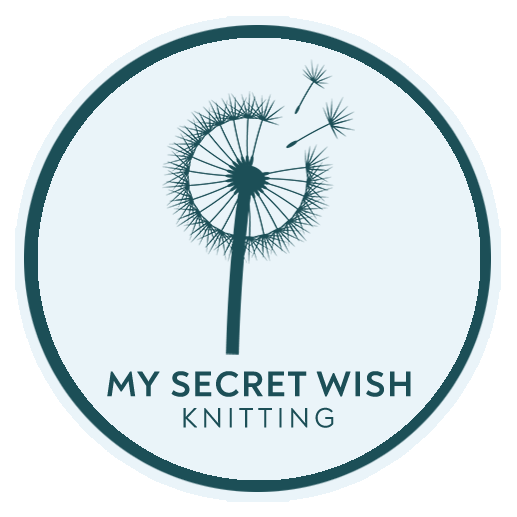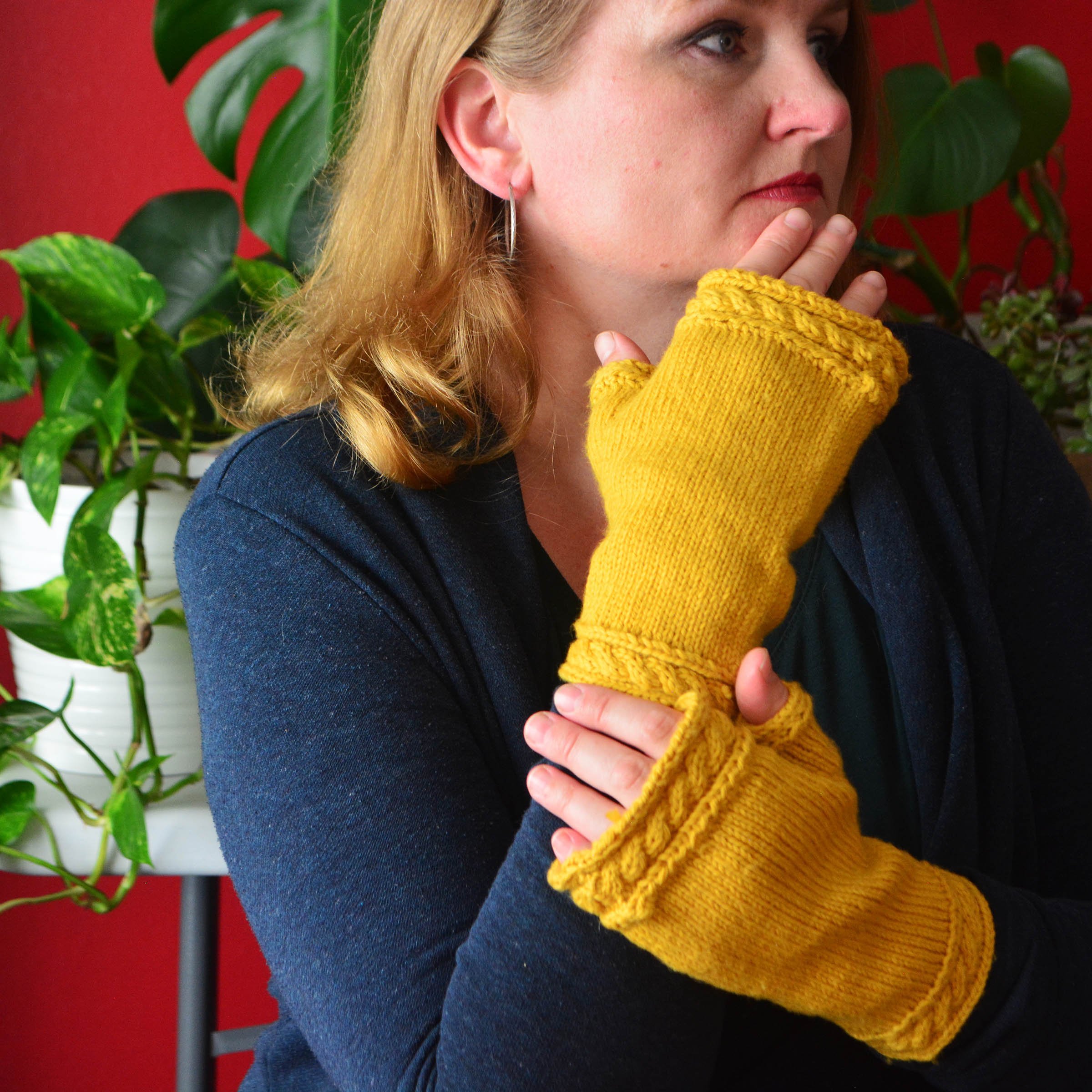How to Substitute Yarn
Find the perfect yarn, even if it’s not what the pattern calls for
Picture this: you're scrolling through Ravelry looking for your next knitting project, and, like a gift from heaven, there it is—the Perfect Thing. Just the ticket. Like you designed it yourself.
Except, you didn't, which means you're going to have to find yarn that will work with it. You glance at the yarn requirements and notice with dismay that it uses some super-hard-to-find handspun brand from a country across the ocean and no local distributors. And you need to finish this project in a week for your niece's birthday. And now that you've seen it, it has to be this one.
What's a knitter to do?
Substitute.
In this article, I’ll give you tips and tricks for what to look for when substituting yarn to ensure you’re happy with the final results. Let’s go make some magic!
How to do it:
Basic Principle:
You’ll be gauging the qualities of different yarns based on their weight, construction, hand, density, and fibre content to see what’s the best fit for your project.
I can probably count on one hand the number of times I have used the exact yarn called for in a given pattern. I live in a remote location, and there is no such thing as a drive to the LYS (Local Yarn Store) for me to fill in a gap in my stash when the need arises. Even when ordering online, one's budget sometimes requires you to choose a yarn other than the one a pattern was designed for.
I've made my share of mistakes when choosing yarns, so I'm hoping you can learn from them.
Here are the things to consider when choosing a substitute yarn:
Fibre Content
Different fibres act very differently. Properties such as elasticity, loft, washability, and more can drastically affect the finished outcome of a project.
Each fibre has its own distinct characteristics. Know what they are, and when substituting, make sure to choose something similar. If you need to choose a different fibre (for instance, because of an allergy or budget), be sure to choose a fibre that will act in a similar way for characteristics important to the design you are making.
“Which characteristics of this fibre are important to the finished design?”
For instance, natural fibres made from wool or alpaca can be felted--which means they will shrink if washed incorrectly. They also retain their shape because they have a "memory," which means you can block them (reshape them after knitting). Acrylic, made from synthetic petroleum byproducts, cannot.
Acrylic is supremely washable, though, and will never shrink in the dryer. Silk has an amazing sheen but is high-maintenance, mohair has a glorious halo but poor stitch definition, cotton allows garments to breathe but is very cold when wet.
Lofty alpaca would not be a good choice to replace cool cotton for a summer tank top. Inflexible linen would not be a good replacement for stretchy wool in a garment designed with a great deal of negative ease.
So, when considering a substitute, ask yourself “Which characteristics of this fibre are important to the finished design?”
Although this is the same design, the different fibre content in the two yarns causes a different look between these two versions of the Lucy Pevensie Tam.
Yarn Construction
In the bad ol’ days, when Grandma wanted to knit a sweater she went to Eaton's and picked up a skein or ten of super-scratchy acrylic yarn, because that was her only option—unless she was a spinner and made it herself. But in Canada, that wasn't often the case in the fifties, not even for my farm-dwelling grandmas. And really, with a passel of kids and farmhands to feed (and clothe!), who had time to spin the yarn for the sweaters first?
Nowadays, the options for yarn types and construction seem to overflow from the shelves. The thing is, you can't just substitute an eyelash yarn for a chainette construction or a ribbon yarn for a single-ply and expect the garment to look and act like the picture on the pattern.
Just like fibre properties, different yarn constructions impart very different qualities to the yarn. A wool roving will create a very smooth, almost felted look (and can actually be felted, if that's your goal), but is very weak and may break a lot during construction and wear out quickly unless felted. It will also have poor stitch definition. A twisted yarn will have greater strength, and will likely have better stitch definition (depending on fibre content) but probably will not felt as easily. A chainette construction will be very strong with excellent stitch definition, but may not lie flat in the stitch, which would not be a good choice to replace that yarn with a fuzzy halo on a sweater meant to look and feel like a teddy bear's pelt.
“Which characteristics of this yarn’s construction are important to the finished design?”
When substituting yarn, choose a construction that is similar to what the pattern calls for. Some swaps can work (say, a roving for a four-ply), but you may be giving up stitch definition or strength. If you are not sure how a yarn is constructed, ask someone who works in the yarn store you’re purchasing it from or check its stats page on Ravelry.
Novelty yarns like tape, ribbon, eyelash, fur, ruffle, and more are intended for very specific garments, and should never be substituted for plied or tubular yarn unless you are feeling very experimental or know what you are doing. Just know you are taking a risk.
Ask yourself “Which characteristics of this yarn’s construction are important to the finished design?”
These are all bulky yarns made from 100% wool or close, but the top two are single-ply (roving) types, and the other three are plied with different amounts of twist. The tighter the twist, the stronger the yarn, and the better the stitch definition. Yarns pictured from top to bottom (links go to Ravelry): Paton’s North America Classic Wool Roving, Bernat Roving, Cascade Yarns Ecological Wool, Knit Picks’ Wool of the Andes Superwash Bulky, and Madelinetosh Tosh Chunky.
Yarn Weight
This is almost the only characteristic of yarn that is ever considered when substituting, especially by beginners, which is why so many projects end up as disappointments when you substitute. After reading the first two sections of this post, you already know better. But even when it comes to yarn weight, there are several things to consider.
Label for worsted weight or aran weight yarn.
Yarn weight is determined by the yardage of the yarn for a specific mass.
Most yarn is sold in 50-gram (1.76-ounce) or 100-gram (3.53-ounce) skeins. The yardages for each weight (or thickness) of yarn will usually be indicated on the label, and generalized with a standardized numbering system. For instance, worsted weight yarn (one of the most commonly-used weights) is a 4, and the symbol looks like the image on the right.
However, this isn't the only thing you need to look at. Each of those little numbers actually covers a range of weights. The #4 Medium weight also includes aran/heavy worsted, which means the yarn is thicker than a plain worsted and will give you a different gauge. Looking only at this number could be a problem for a closely-fitted garment like a glove that has little room for error.
So, while the number label can help you quickly narrow down your options, you also need to compare yardage to weight to make sure you are getting a yarn as close to the gauge called for in the pattern as possible.
“Is the yardage and weight for this yarn as close as possible to the yarn called for in the pattern?”
The heavier-weight the yarn, the more difference you will find in the yardage within a certain number, and the more difference you will have in your gauge swatch, too. That is why you must always compare the yardage/weight of the called-for yarn against any yarn you are considering substituting.
(Note: different fibres have different weights, also. A bulky cotton yarn is going to be much heavier than a bulky alpaca yarn, just because the fibre is denser. That means a 100-gram skein of bulky cotton yarn will have a much shorter yardage than its bulky alpaca cousin. This is where comparing the label's gauge suggestions is helpful, although you will always need to do your own gauge swatch. Take this into consideration when comparing yardages--but, as we already discussed, cotton is rarely a good substitute for alpaca.)
For this consideration, ask “Is the yardage and weight for this yarn as close as possible to the yarn called for in the pattern?”
These are all 100-gram (3.53-ounce) skeins of bulky-weight yarn (#5). The yardages on each skein, from left to right, are: 108 yards (100% baby alpaca yarn), 165 yards (100% wool yarn), 120 yards (100% cotton yarn), 137 yards (100% Superwash wool yarn), and 132 yards (100% cotton yarn).
Wikipedia has a handy reference page here with a brief overview of fibre properties, construction types, and yarn weights. At the time of this writing, it is still incomplete, but is a good quick reference for some of these topics. Check it out.
Questions To Ask Yourself:
Which characteristics of this fibre are important to the finished design?
Which characteristics of this yarn's construction are important to the finished design?
Is the yardage and weight for this yarn as close as possible to the yarn called for in the pattern?
So, now you’re armed with the tools to create that Perfect Thing. Go forth, raid your stash (or the closest purveyor of yarns), and substitute!
This article was originally published on Talena Winters’ personal blog at https://www.talenawinters.com/wintersdayin on November 16, 2016. It was updated and published here on June 13, 2023.










